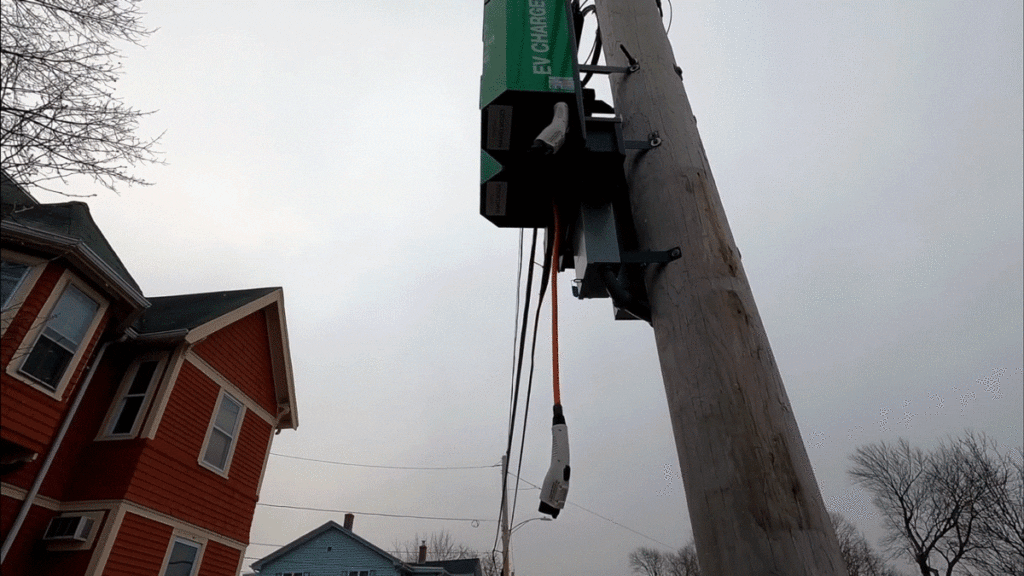These Retractable On-Street EV Chargers Need To Be Everywhere

Electric vehicles are still gaining momentum here in the U.S. market, tipped to crest ten percent of new car sales in 2024, but there is still a bit of hesitation from many Americans when it comes to charging and infrastructure. In order to bridge that gap, we need more on-street level two overnight chargers, like this simple and easy retractable unit mounted on a power pole. Right now EVs really only make sense if you live or work somewhere that you can reliably charge every day, meaning many people who rent their living accommodations are automatically precluded. This kind of charger could fix that.
Electric Car Charging Still Sucks, But That Might Change
Retractable power pole EV chargers don’t exist where I live. I didn’t actually know they were a reality until Mark Zuckerberg’s Threads delivered me this post from user @mkarolian. Some light digging shows me that these retractable chargers have been around for a few years now. So why aren’t they more prevalent? By making the cord retractable, this fixes so many issues; sidewalk real estate, cords left on the ground, vandalism, etc. And because the cords are so long, they can be extended to plug in on either side of the vehicle, front or back. They’re genius!
Utility Pole Level 2 EV Charging: Winter Update + Expansion Plans
Practically all of the parking in my neighborhood is on the street. It would stand to reason that there are people living here who can’t choose to drive an EV because they don’t have a place they can plug in overnight to juice up. It would be really nice if I could just park my electric motorcycle on the street and plug it in. I’d probably use it more often.
If you ask me, this kind of charger is far more important than DC Fast chargers along highway interstate routes. The vast majority of driving is done within 30 miles of your home, so shouldn’t that be where the vast majority of chargers are?



